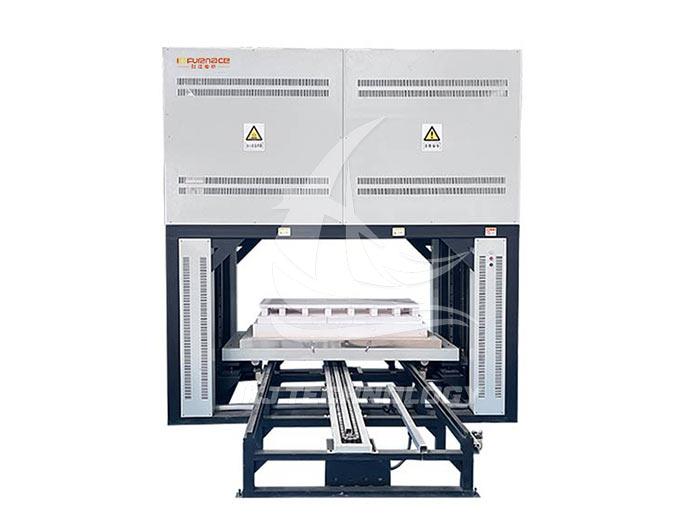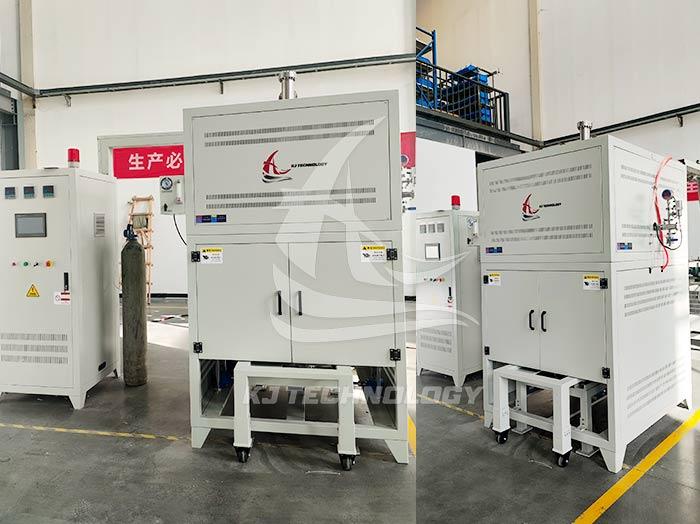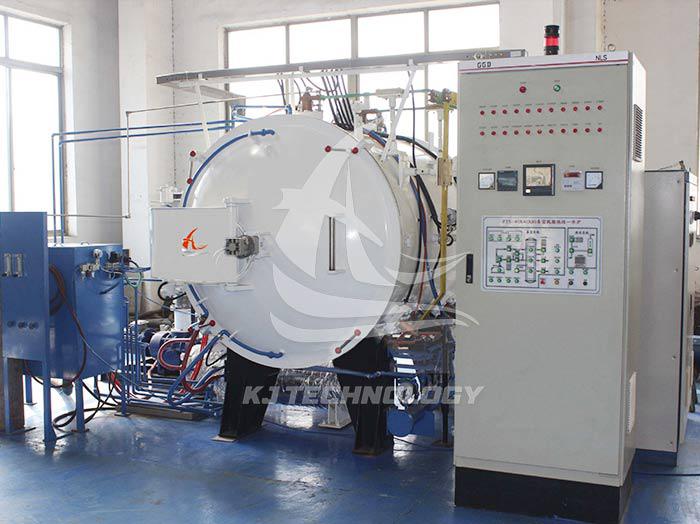The temperature of the electric heating vacuum brazing furnace cannot rise
 09-24-2025 Author: KJ technology
09-24-2025 Author: KJ technology
The temperature of the electric heating vacuum brazing furnace cannot rise to the set value, which may be caused by factors such as thermocouple failure, heating element problem, vacuum system abnormality, power or control system failure, improper process parameter setting, equipment leakage or insufficient insulation, excessive workpiece loading or material characteristics. It is necessary to gradually investigate and solve the problem by checking the thermocouple, heating element, vacuum system, power and control system, process parameters, equipment sealing, workpiece loading, etc. The following are specific reasons and solutions:
1. Temperature measurement and control system malfunction
Thermocouple malfunction:
Phenomenon: Abnormal temperature display, unable to accurately reflect the actual temperature inside the furnace.
Reason: Thermocouple wire breakage, aging, or improper installation position.
Solution: Replace the thermocouple with a new one, ensuring that the installation position is correct and the contact is good.
Temperature control instrument malfunction:
Phenomenon: The temperature control instrument displays abnormally and cannot accurately control the temperature.
Reason: The internal components of the temperature control instrument are damaged or the parameter settings are incorrect.
Solution: Follow the temperature control instrument manual for maintenance, or contact a professional for repair.
Improper PID parameter settings:
Phenomenon: The temperature fluctuates greatly and cannot be stabilized at the set value.
Reason: The PID parameters (proportional band P, integration time I, differentiation time D) are set improperly.
Solution: Adjust the PID parameters to the optimal state according to the equipment manual and actual process requirements.
2. Heating element malfunction
Heating element damage:
Phenomenon: The heating element does not generate heat or generates uneven heat.
Reason: Heating element aging, breakage, or poor contact.
Solution: Replace the heating element with a new one, ensuring good contact and reasonable layout.
Heating element contamination:
Phenomenon: There is dirt or oxide on the surface of the heating element, which affects the heating efficiency.
Reason: Long term use without cleaning and maintenance.
Solution: Regularly clean the surface of the heating element to remove dirt and oxides.
3. Vacuum system malfunction
Vacuum pump malfunction:
Phenomenon: The vacuum degree cannot reach the set value, which affects the heating efficiency.
Reason: Vacuum pump damage, oil contamination, or incorrect rotation direction.
Solution: Check the vacuum pump, replace the oil or adjust the rotation direction.
Vacuum system leakage:
Phenomenon: The vacuum degree is unstable and continues to decrease.
Reason: Poor sealing of furnace body, flanges, valves and other components.
Solution: Check and repair the leakage point, replace the sealing ring or tighten the bolt.
4. Power and control system malfunction
Power failure:
Phenomenon: The device cannot start or the heating power is insufficient.
Reason: Damaged power supply circuit, unstable voltage, or overload protection device activated.
Solution: Check the power circuit to ensure stable voltage and no overload.
Control system malfunction:
Phenomenon: The device cannot run according to the set program.
Reason: Damage to internal components or program errors in the control system.
Solution: Contact professionals for maintenance or reprogramming.
5. Improper setting of process parameters
Heating rate too fast or too slow:
Phenomenon: The temperature cannot steadily rise or reach the set value.
Reason: Unreasonable heating rate setting resulted in the equipment being unable to respond in a timely manner.
Solution: Adjust the heating rate to a reasonable range according to the equipment manual and actual process requirements.
Insufficient insulation time:
Phenomenon: The temperature cannot remain stable after reaching the set value.
Reason: The insulation time is set too short, resulting in temperature fluctuations.
Solution: Extend the insulation time to ensure temperature stability.
6. Other factors
Excessive loading of workpieces into the furnace:
Phenomenon: The temperature rises slowly or cannot reach the set value.
Reason: Excessive furnace loading of workpieces leads to uneven heat distribution.
Solution: Reduce the amount of workpieces loaded into the furnace to ensure even distribution of heat.
Material characteristics of workpiece:
Phenomenon: Some materials are prone to phase transition or chemical reactions at high temperatures, which can affect temperature rise.
Reason: The material properties of the workpiece limit the temperature rise.
Solution: Understand the material characteristics of the workpiece, choose the appropriate brazing temperature and process parameters.
Equipment leakage or insufficient insulation:
Phenomenon: The temperature cannot rise steadily or rapidly drops after reaching the set value.
Reason: There are leakage points or damaged insulation layers in the equipment.
Solution: Check the sealing of the equipment and repair the leakage points; Replace the insulation layer or strengthen the insulation measures.








